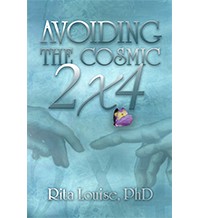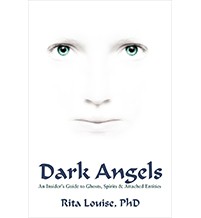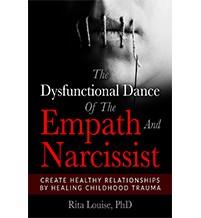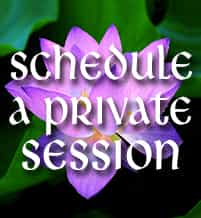How To Heal The Wounds Of The Traumatized Inner Child
Children come into this world filled with joy, spontaneity, creativity, playfulness and love. They, and their inner child, are free of constraints and experience the world with an innocent sense of curiosity and wonder. As they grow older, their parents, siblings, elders, peers, and life events slowly influence them. Expectations and increased responsibilities begin to restrict the free flowing creativeness of the child. These situations, depending on the cause or the outcome, are experienced as trauma in the young person’s mind.
Everyone encounters some degree of trauma growing up. A favorite toy is mistakenly thrown away. A wished for red bicycle is not received at Christmas. A close friend moves away. Simple circumstances like these can create wounds in the young child’s psyche. These unintentional yet perceived upsets can be lessened or resolved if the traumatized child is offered care, nurturing and support. This helps to reduce the potential damage these situations can cause. If a parent is not there to support the emotional needs of their child, the child is forced to deal with the hurtful circumstance alone. This scenario can cause wounds that do not heal.
When Do Wounds First Develop?
Children who live in homes where they experience neglect, physical, psychological, or sexual abuse, the trauma can be can be amplified. For these children, hurtful scenarios, instead of being a one off thing, are something they encounter repeatedly. These experiences can create deep wounds within the child. Moments of unresolved distress can lead to serious, long termed effects that can plague them well into adulthood.
Parental abandonment, rejection or strait on abuse often leaves a child believing that they are only lovable if they are doing what is desired of them. These children quickly discover that life is easier if they hide their emotions. They learn early on how to push down their feelings of anger or sadness. To survive, they may endeavor to forget their inner pain. They shut down, stifle or even kill their authentic selves. They do this to avoid being hurt, abandoned or rejected as they portray to the world that they are strong and unaffected.
These wounds deepen throughout childhood and can continue to intensify well into his or her pubescent years. Negative encounters can cause the child to make choices and internalized decisions of how they should be in order to be seen as being normal by their peers.
Trauma & The Inner World Of The Wounded Child
The early life choices a child makes form scripts which the child internalizes about how their life should be. Scripts are like little computer programs that subtly direct how a person acts and interacts with others. These scripts eventually create barriers that block individuals from accessing their true inner nature, all in an effort to protect them from being hurt. Sadly, these same walls can trap the growing child inside a self-imposed prison, inhibiting their ability to experience their true needs, their true wants and their true desires. They can become disconnected from themselves and all that they encounter.
Triggers And The Inner Child
We can all act childish every now and then especially when we our world is challenged. While we may appear to be adults on the outside, when situations occur, that trigger one of our scripts, our wounded “inner child”, can appear and take over the show. It is an indicator that our fight, flight or freeze stress responses is active. We are not reacting to what happened to us as an adult, but are responding to the situation from an injured place within ourselves, from a place of trauma. This unconscious part of ourselves can at times covertly control our demeanor. In some situations this part of ourselves can unknowingly run our lives.
A temper tantrum, incessant worry or feeling panicky are a few indications that our wounded inner child has been activated and is now calling the shots. We might struggle with feelings of anger, hopelessness, worthlessness, sadness, loneliness or unexplained fear.
How Do I Know If I Have A Wounded Inner Child
Other indicators that may suggest we have a wounded inner child include being a people-pleaser, clinging to a relationship, even if they are toxic, or having a hard time trusting and committing ourselves to others. We might feel that there is something inherently wrong with us. We might constantly criticize ourselves or are unforgiving of who we are and the things we do – a perfectionist. We might also find that we have difficulty letting go of things, especially negative emotional experiences.
As an adult, we may think that we have outgrown our childhood trauma. Our hurt feelings and repressed emotions, however, do not go away. They, instead, fester inside us, hiding in the shadows of our psyche waiting to reemerge. These unhealthy scripts, especially in someone who has experienced a high degree of trauma, can lead to ongoing cycles of destructive and self-sabotaging behaviors which can underscore many emotional, behavioral and relationship issues.
Who Or What Is Our Inner Child?
The therapeutic concept that there is a part in each of us that houses both the positive and negative aspects of our authentic, childlike demeanor, was first posited by Carl Jung. This aspect of our being, in therapeutic circles, is referred to as the inner child, the child within, the wounded child or the child archetype. This unconscious part of ourselves is formed by our environment, the people and situations we have experienced.
We have all encountered this child. It makes itself known through our anger, fears, frustrations, procrastination, anxiety or exhaustion. It is made up of our unconscious memories, thoughts, beliefs, feelings and wounds. When we find ourselves skipping down the street when we are happy or conversely reacting negatively when someone tells us “No”, each reflect our accessing this inner child.
Trauma is stored in the body when a child experiences hurtful situations and it is not addressed at the time. When a similar situation presents itself, instead of reacting to it from the adult self, it is the wounded traumatized child who steps in and tries to navigate the situation in order to minimize potential pain. He or she does this because their need for love, understanding and compassion were not met when they were children. Addressing the unmet needs of the inner child and healing these deep inner wounds, anyone can begin to experience a happier, healthier and more authentic life.
How To Heal Deep Seated Trauma
Accessing our wounded inner child is one way in which we can find the root cause for many of the emotional issues we experience as adults. Through it, we can learn to tap into the emotions, beliefs and negative experiences that we have over the years learned to suppress. It allows us to bring these feelings and emotions into our conscious mind so that they can be addressed. This self-discovery work allows us to shine the light on our inner world and affords us the opportunity to restore our unique and authentic nature. Through it, we can heal.
Healing your Inner child involves connecting to this unconscious part of our being. It gives us the chance to communicate with our younger, wounded self without judgment and invalidation. Many use it to provide the hurt parts of ourselves with the love, care and compassion it so desperately desires. It gives us a chance to heal our pain and make peace with ourselves.
What Can I Do To Heal?
The tools associated with healing your inner child and inner child work allow us to parent ourselves. Crazy as this may sound, we can use the adult portion of our consciousness to sooth ourselves and provide us with the nurturing we did not receive as a child. This powerful therapeutic modality works to heal deep trauma and help us break free of our ongoing dysfunctional patterns of living. It can literally set us free.
Connecting to your inner child can be scary. It requires strength to peek inside ourselves and revisit all that we have experienced. Sometimes it is terrifying to look at the source of our suffering. It is easier to blame others than to take responsibility for ourselves and what we bring to the table. We may also choose to find activities to distract us from ourselves and our emotions. Many would rather live a mediocre existence; a life filled with stubborn ignorance and suppressed pain than to own the direction their lives takes.
It does not have to be that way and inner child work can help anyone interested move past their old inner wounding into a new and happier life. Each of us can begin down the path to living life as a “wounded healer”.
4 Simple Steps You Can Use To Heal Your Inner Child
There are a number of different approaches to healing your inner child, our wounded, younger selves, but they all revolve around the concept of communicating with the child inside. Some people find it helpful to work with a counselor, therapist or coach. Others decide to travel done this road of transformation by themselves.
Mindfulness: A Powerful Approach To Healing
One simple approach to creating a mindful dialog between your adult self and the child inside is to think about a question you might want to ask. Then find a quiet place to sit, close your eyes and allow your body to relax. Try to imagine your younger self sitting in front of you. Some people find it helpful to hold a stuffed animal or doll, to represent this aspect of their being.
When you are relaxed and ready, ask your inner child a question. Wait a few moments for a reply. Do you internally hear a response? Perhaps you are seeing an image in your mind’s eye or are feeling a sensation in your body. This is your inner child communicating with you. Do not try to control the direction this dialog takes. Instead, be open to whatever comes up.
What Can I Do If I Get Triggered As I Start This Healing Work?
Take a few deep breaths if you feel like you are struggling to get an answer or if the answer you receive is starting to trigger you. Breathing naturally relaxes the body and reduces the activation of our stress response systems. It supports the reduction of intrusive thoughts (worry and rumination) and brings us back into the present moment.
Inner Reflection Supports Healing Trauma
Take a moment to reflect on what you sense. If you have further questions, ask your inner child. What does he or she have to say? Many people record the responses they receive on a piece of paper or in a notebook. This is a great way of keeping track of what your inner child wants and needs from you. In time, you might even be able to carry on a whole conversation with your inner child.
Painful feelings may come up as you tap into any wounded parts of yourself. You may uncover a deep-seated hidden emotion or belief. You might sense sadness, anger, fear, frustration, abandonment and more. These feelings, abet uncomfortable do create a wonderful opportunity to explore them further. You might want to ask yourself “why do I feel this way”. It might surprise you at the answers you receive. You can use this method to dig into the depths of yourself and to reassess your beliefs from a different perspective – from an adult healing perspective.
Healing Your Inner World Reduces Triggering
Regularly, ask your inner child how he or she is doing. If she is excited, be excited with her. If she wants to cry, be the parent she never had. Wipe away her tears and comfort the little girl inside. Provide her with nurturing and reassurance. Ask her what she is feeling and what she wants or need from you right now. Let her know that it will be ok and that you are there for her and always will be.
Though the simple step of dialoging with your inner child, healing and transformation can occur. The scars that you received as a child can begin to fade away and a new day can dawn. If you have never connected with your inner child, now is your chance to start. Be open to all of the possibilities this practice provides and the healing transformation it can offer. It will help you to re-parent yourself an become more authentic to experiencing a bliss-filled life.
Are you struggling to heal your inner child?
Taking action is the key to making positive changes in your life. This includes your health. So don’t wait! Take your next step right now and contact Dr. Rita to schedule a private consultation.
Medical Intuitive Reading – Intuitive Counseling – Energy Healing
© Copyright Rita Louise, Inc. – soulhealer.com. All rights reserved.




